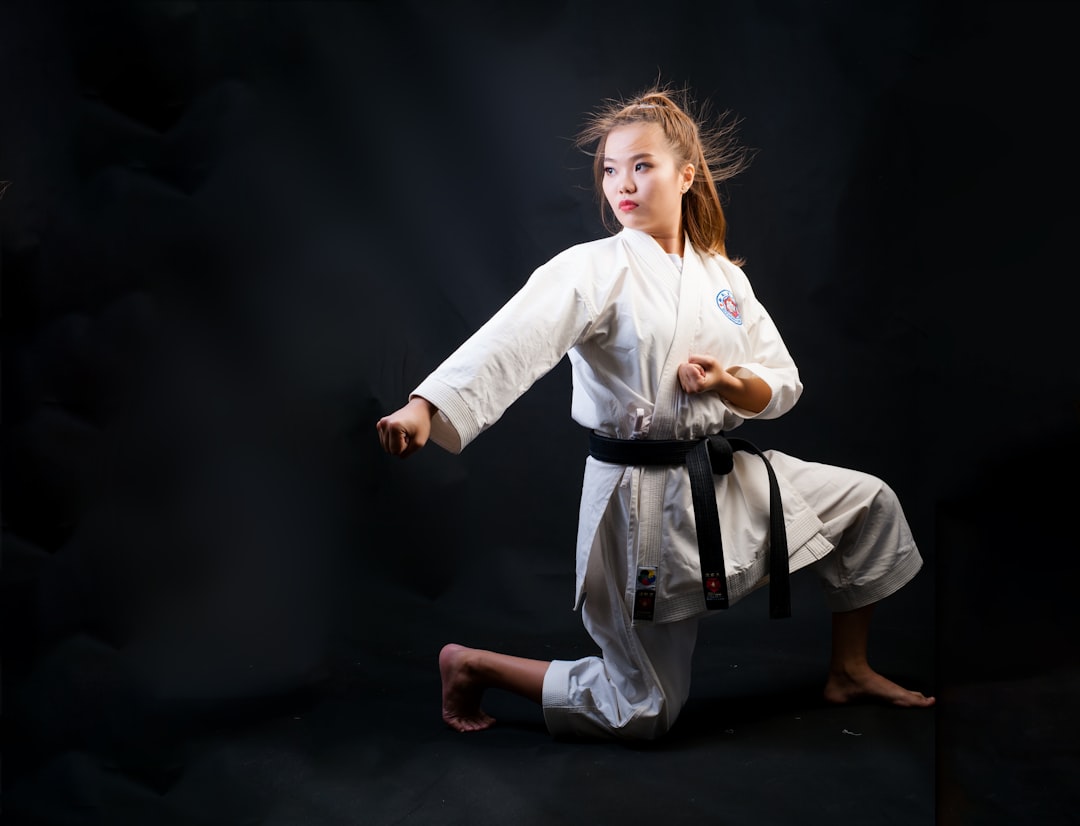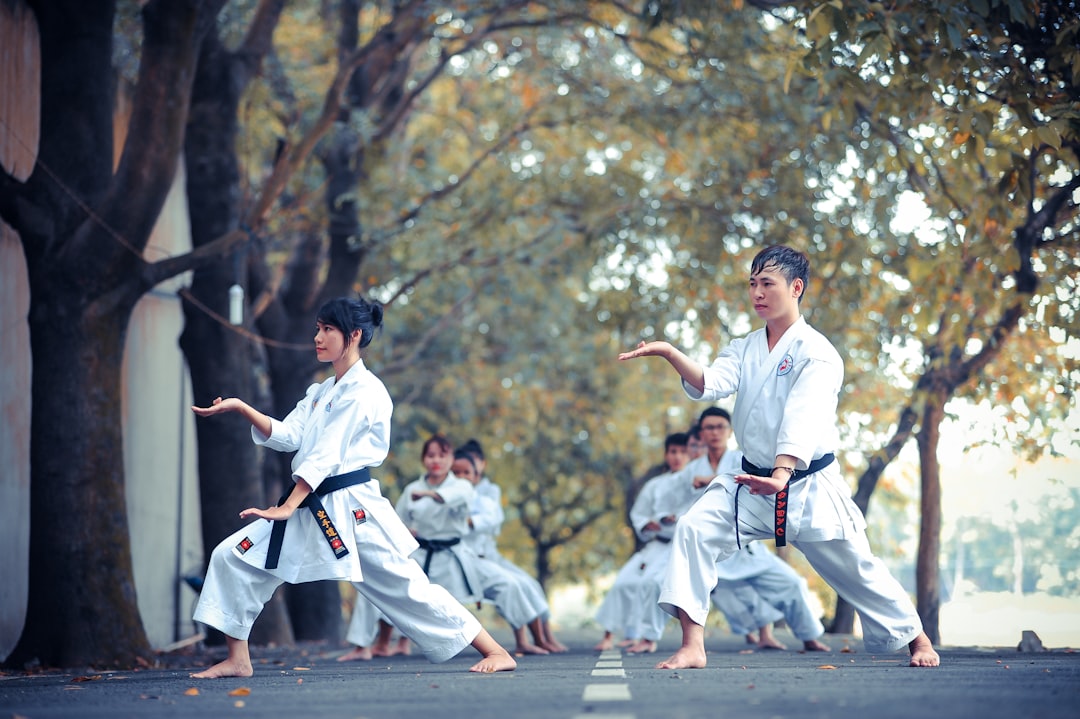The article section discusses the cultural significance and practical importance of the karate gi, a traditional uniform essential for practitioners that embodies respect, discipline, and humility. Made from cotton or hemp, the gi allows for movement while maintaining modesty and offering protection during practice. Its white color symbolizes purity and mental clarity, fostering a focused training environment. Beyond its functional aspects, the gi is a representation of the wearer's dedication to karate and their integration into the martial arts community. The tradition of donating karate gis is emphasized as a way to assist new practitioners and those with limited resources, promoting unity and camaraderie within the community. Historically, the karate gi has evolved from simple training attire in Okinawa to a more formalized garment that adheres to global competition standards while maintaining its symbolic meaning. Donating karate equipment is presented as a meaningful act that not only supports individuals starting their martial arts journey but also helps preserve the art's rich heritage. Aspiring martial artists often face financial barriers to accessing quality gear, and donations of karate gis can directly address this issue by providing the necessary tools for effective training and safety, thus promoting inclusivity and enabling all practitioners to train in an appropriate environment. The section encourages readers to consider donating karate equipment as a meaningful way to support and empower the next generation of martial artists.
Karate practitioners worldwide don their uniforms with pride, each garment a symbol of discipline and respect for the martial art’s rich tradition. This article delves into the essence of a karate uniform, commonly known as a gi. We explore its significance in training, the evolution from its historical roots to contemporary use, and how donating karate equipment, especially uniforms, can support aspiring martial artists. Join us as we honor the gi’s role in the world of karate.
- Understanding the Significance of a Karate Uniform: The Gi's Role in Martial Arts Training
- The Evolution of the Karate Gi: From Tradition to Modern-Day Practice
- Supporting Martial Artists: How Donating Karate Equipment, Including Uniforms, Makes a Difference
Understanding the Significance of a Karate Uniform: The Gi's Role in Martial Arts Training

When engaging in the discipline of karate, understanding the significance of the uniform, known as a gi, is crucial to appreciating the tradition and formality of the martial art. The gi serves as more than just a garment; it represents the wearer’s commitment to the practice and embodies the principles of respect, discipline, and humility inherent in karate. Constructed with cotton or hemp fabric, the gi is designed to facilitate movement while providing minimal restraint during practice and performance. Its white color symbolizes purity and cleanliness, both of the body and the mind, which are essential for focused training. When participants don their gis, they are not only preparing for physical exertion but also signaling their readiness to learn and grow within the martial arts community.
In addition to its symbolic significance, the gi is an integral part of karate training, offering protection against abrasions and minor scrapes that can occur during practice. It allows practitioners to execute techniques safely without the risk of revealing sensitive areas of the body unintendedly. Moreover, the uniform’s durability and practicality make it a valuable piece of equipment for any karateka (practitioner). For those looking to contribute to the karate community, donating karate equipment like gis can be a meaningful way to support beginners or those who may not have access to their own. Do you have old or unused karate gis gathering dust in your storage? Consider donating them to local dojos or organizations that help new practitioners get started on their martial arts journey. This act of giving back not only declutters your space but also fosters a sense of unity and camaraderie within the martial arts community.
The Evolution of the Karate Gi: From Tradition to Modern-Day Practice

The karate gi, a traditional garment worn by practitioners during training and competition, has a rich history that reflects the evolution of martial arts practice. Originally, practitioners in Okinawa wore simple cotton garments known as “dogi” before intensive training sessions. These early versions were practical and allowed for ease of movement during exercises. Over time, as karate expanded beyond its roots and became a global discipline, the design and style of the gi underwent significant changes to meet diverse needs. Today, the modern karate gi is more structured and standardized. It typically consists of a jacket and pants made of heavier cotton or hemp fabric, designed to be both durable and comfortable for rigorous training. The evolution of the gi has been influenced by various factors, including cultural exchange, the need for uniformity in competition, and advancements in textile technology.
In contemporary practice, the karate gi serves not only as a garment but also as a symbol of respect and discipline within the martial arts community. As karate enthusiasts continue to practice and pass on their skills, the importance of having access to quality equipment becomes evident. For those looking to donate karate equipment or support the next generation of practitioners, organizations and dojos often welcome contributions of well-maintained gis. This not only aids individuals who may face financial constraints but also ensures that the tradition is preserved and honored. When considering the donation of karate equipment, it’s important to ensure that the items are in good condition and fit appropriately for new recipients. Are organizations that accept donations of karate gis widely available? Yes, many martial arts schools and community programs welcome the donation of gently used karate gis to help beginners and those with limited resources begin their training in proper attire. These donations keep the tradition alive and allow for a more inclusive practice of karate.
Supporting Martial Artists: How Donating Karate Equipment, Including Uniforms, Makes a Difference

Consider the impact you can have on aspiring martial artists by donating karate equipment, including uniforms. When a practitioner steps onto the mat, clad in a clean and properly fitting gi, it’s not just about the attire; it’s about the respect for tradition, the readiness to train, and the embodiment of discipline. For many, access to quality gear is a barrier that can hinder their progress and limit their opportunities to practice and compete. By donating karate equipment, you directly contribute to overcoming these obstacles. How do these donations make a tangible difference? They ensure that every martial artist, regardless of their financial situation, has the opportunity to train in an environment suited for their development, fostering inclusivity and promoting the growth of the martial arts community as a whole.
In terms of the types of karate equipment that are most needed, uniforms, or gis, are crucial for any training session. These aren’t just any clothing items; they’re a symbol of respect and tradition in the dojo. A well-maintained gi allows practitioners to perform techniques correctly, which is essential for learning and safety. When you donate karate equipment, particularly uniforms, you’re providing more than just garments; you’re offering a gateway to improvement, empowerment, and personal growth for those who might not otherwise have access to such resources. Where can these donations be directed? They often go to local dojos, martial arts schools, or organizations that support underprivileged students who show promise and dedication but lack the means to afford proper training gear. Through your generous contributions of karate equipment, you enable these individuals to pursue their passion for martial arts with the respect and seriousness it deserves.
In conclusion, the karate uniform, commonly referred to as a gi, serves not only as a garment but also as a symbol of respect, discipline, and tradition within the martial arts community. From its origins steeped in Okinawan culture to its modern-day adaptations, the evolution of the karate gi has mirrored the growth and spread of karate itself. For aspiring and seasoned martial artists alike, access to quality training gear is paramount. Initiatives that encourage donating karate equipment, including uniforms, play a pivotal role in supporting practitioners worldwide, ensuring they can train without financial barriers. Such acts of kindness are a testament to the inclusive and supportive nature of the martial arts community, fostering an environment where the art of karate can thrive for generations to come.
